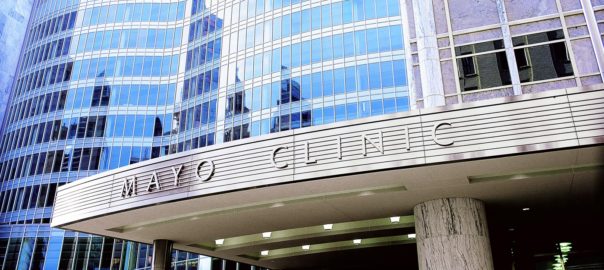Mayo Clinic Performs Groundbreaking Stem Cell Procedure

Being at the frontier of medicine is nothing new for the Mayo Clinic. Ranked #1 in more specialties than any other hospital in America consistently for the last 20 years, the clinic’s 3300 physicians, researchers, and scientists in Arizona, Minnesota, and Florida lead the way in innovative therapies. When traditional therapies fail, patients often seek new and experimental treatments at Mayo. Now, for the first time in the history of modern medicine, researchers at the Mayo Clinic have succeeded in closing a bronchopleural fistula using stem cells.
What is a bronchopleural fistula?
A bronchopleural fistula is an abnormal connection between the bronchus (an airway in the lung) and the pleura (the membrane covering the lungs). Essentially, it is a hole that leads from an airway to the outer membranous covering of the lung. Bronchopleural fistulas may be a postoperative complication following pneumonectomy (surgical removal of a part of the lung or the entire lung). They can also develop following trauma and with certain infections such as tuberculosis. Some malignancies can lead to bronchopleural fistula formation.
How are bronchopleural fistulas managed?
While bronchopleural fistulas are uncommon, their consequences can be quite devastating. The condition is associated with a 50 percent mortality rate. Patients who survive usually endure prolonged hospitalizations and multiple procedures.
Management of bronchopleural fistulas involves protection of the remaining lung tissue and controlling sepsis (infection) and necrosis (tissue death). The fistula can be closed surgically, but this treatment is not always successful, often resulting in poor health and eventual death.
What innovative treatment did doctors at the Mayo Clinic use to treat a bronchopleural fistula?
A 63-year-old patient with a large bronchopleural fistula in the upper chest was referred to the Mayo Clinic after all conventional therapeutic options had been exhausted. With the patient’s health rapidly deteriorating, Dr. Dennis Wingle, M.D., Ph.D., thoracic surgeon at Mayo, decided to try a new approach based on an ongoing protocol to treat anal fistulas in patients with Crohn’s disease (a type of inflammatory bowel disease).
A bioabsorbable mesh was seeded with stem cells harvested from the patient’s abdominal tissue. This mesh was then implanted surgically at the site of the bronchopleural fistula in the patient’s upper chest. Where traditional therapies had failed, this pioneering technique worked. The fistula closed and went on to heal. Eighteen months later, the patient has no more symptoms and has been able to return to a normal lifestyle.
Management of bronchopleural fistulas: What does the future hold?
This is the first time that stem cells have succeeded in repairing and closing a large and recurrent bronchopleural fistula. The solitary patient’s excellent tolerance of the procedure is indicative that this procedure can be expanded for use in other patients as well.
However, more extensive clinical trials will be needed to determine the degree to which stem cells contributed to closing the fistula. Further investigations on bronchopleural fistulas and the use of stem cell therapies are needed before this treatment becomes a standard of care.
References:
- http://www.news-medical.net/news/20160625/Regenerative-medicine-shows-promise-for-bronchopleural-fistulas.aspx
- https://en.wikipedia.org/wiki/Bronchopleural_fistula
- http://www.mayoclinic.org/
- http://accesssurgery.mhmedical.com/Content.aspx?bookId=427§ionId=40372715


